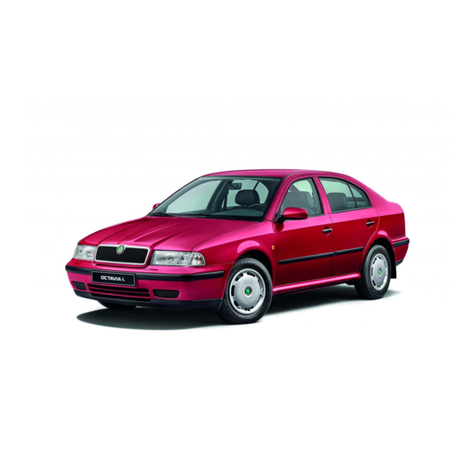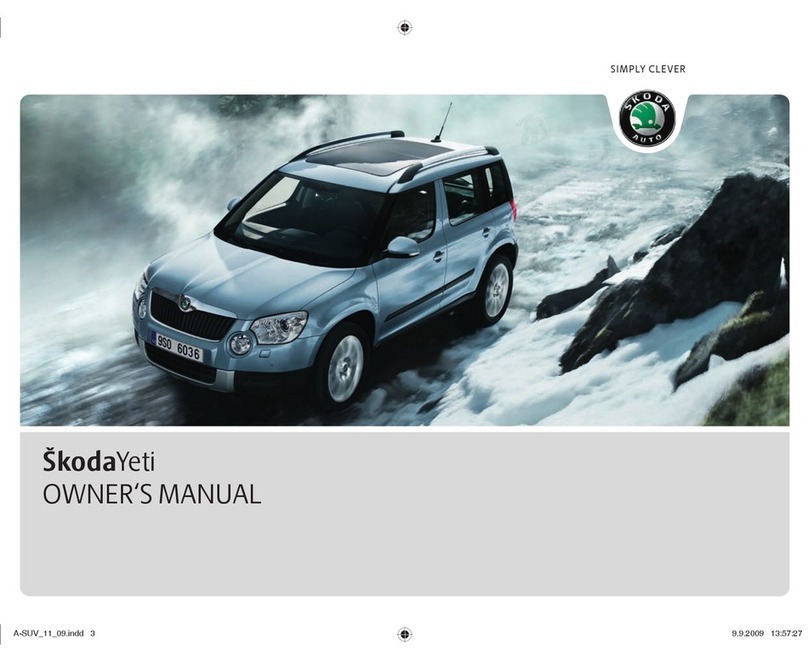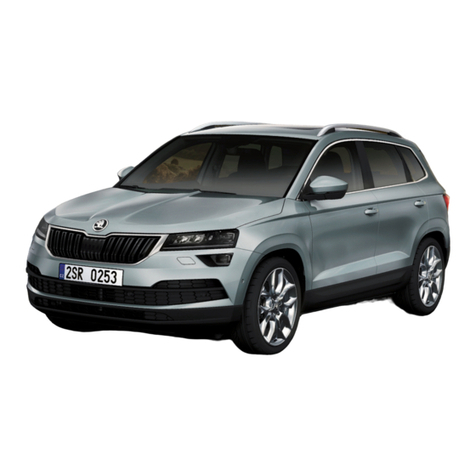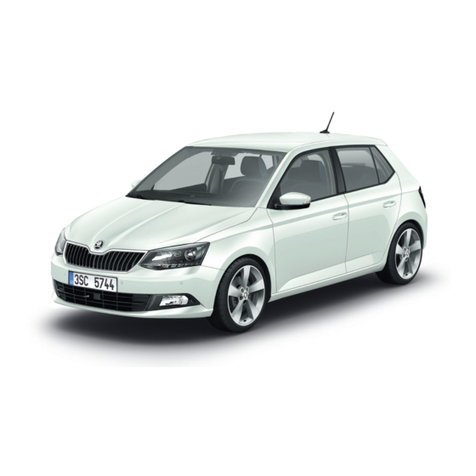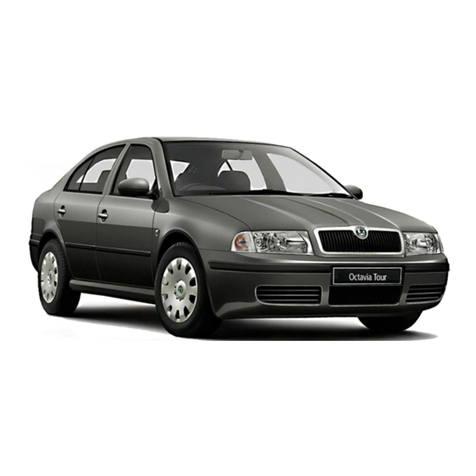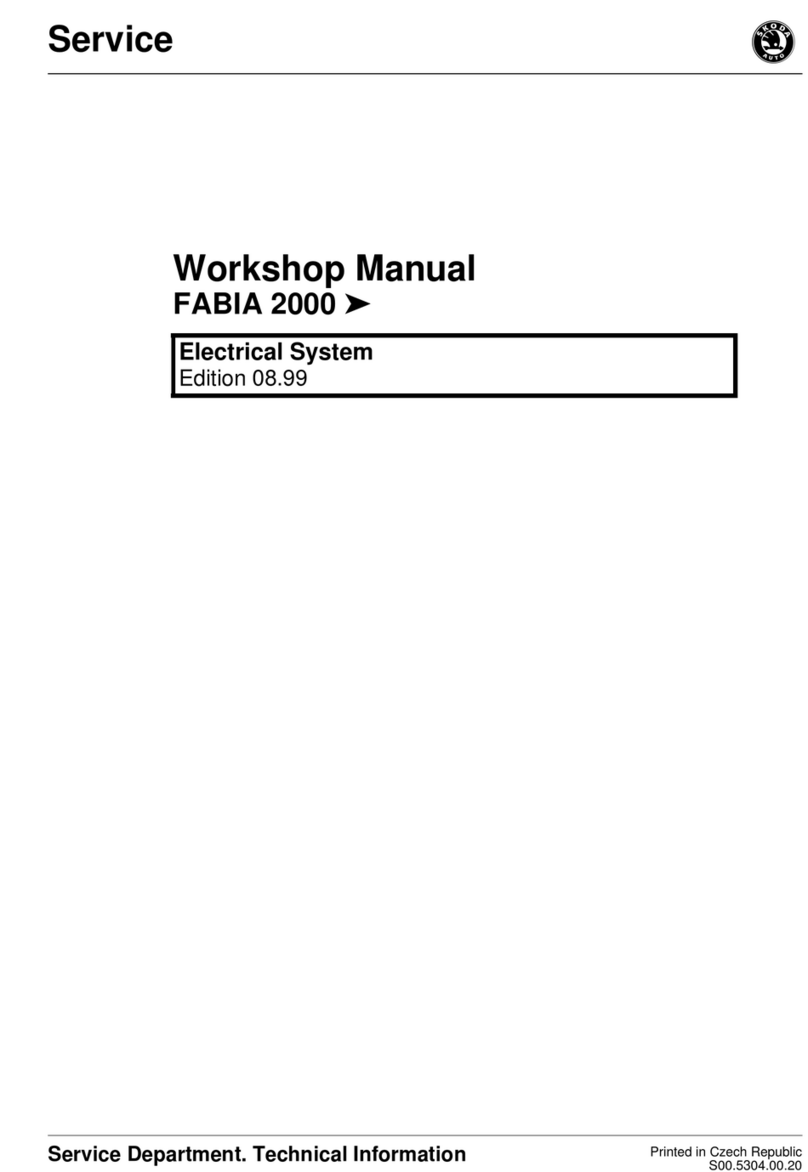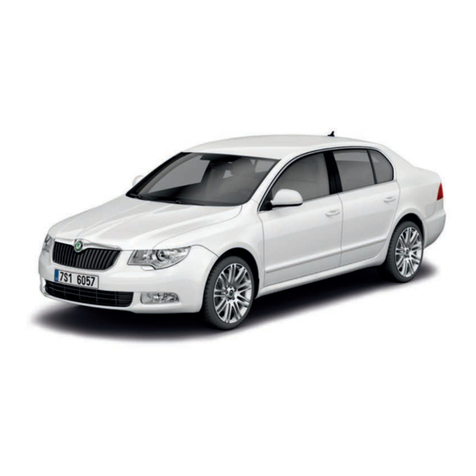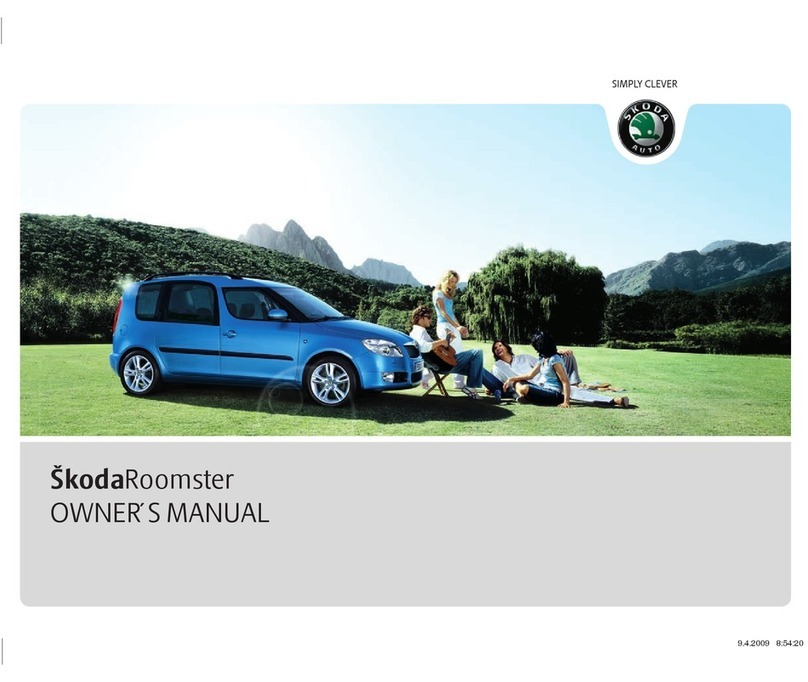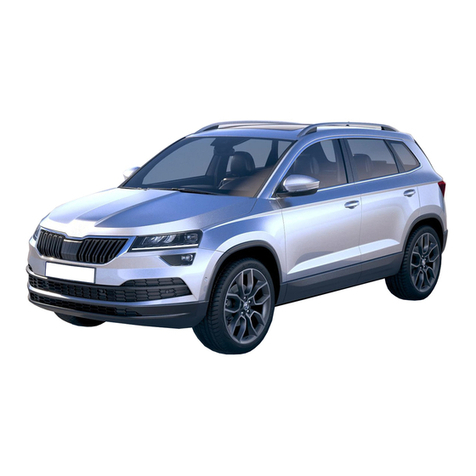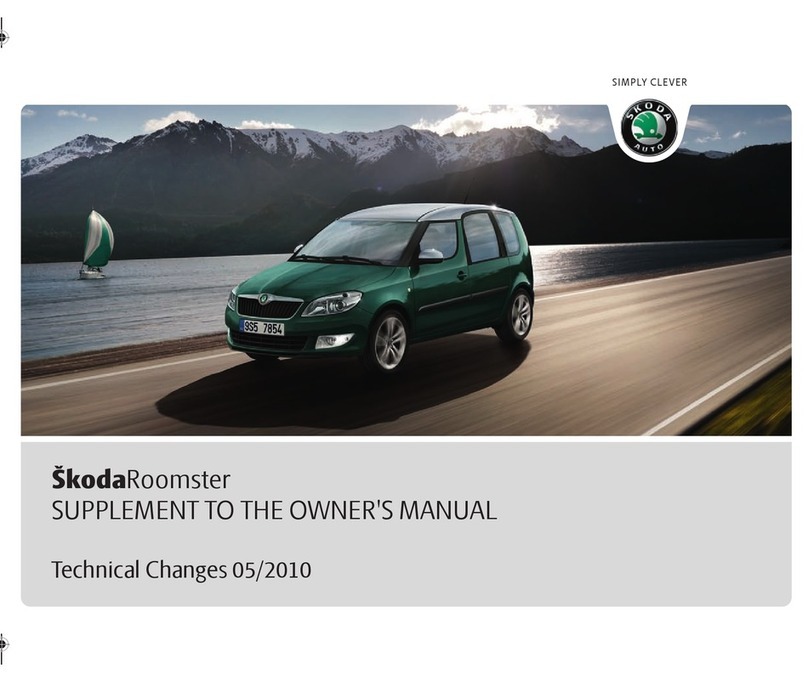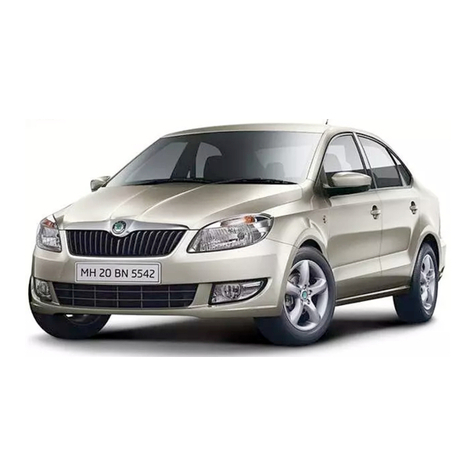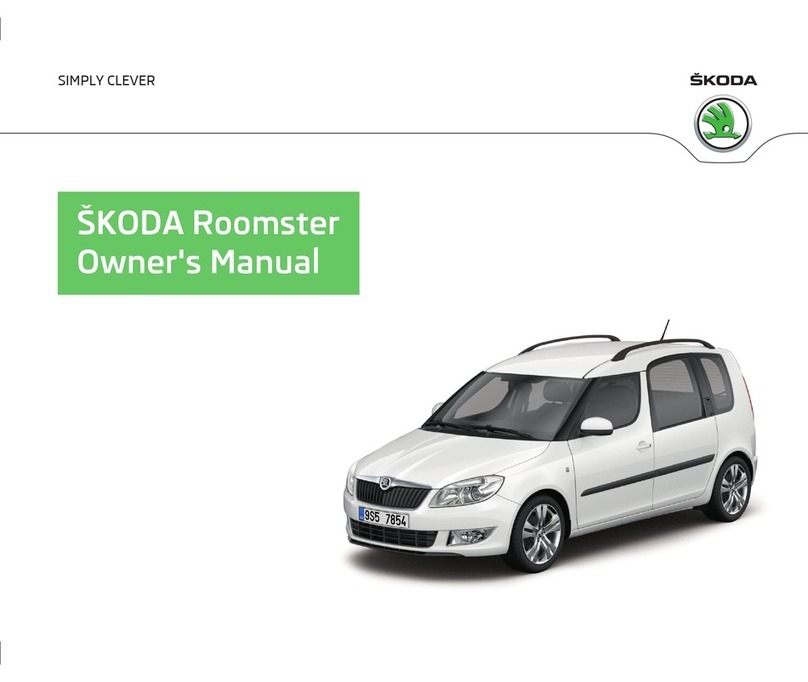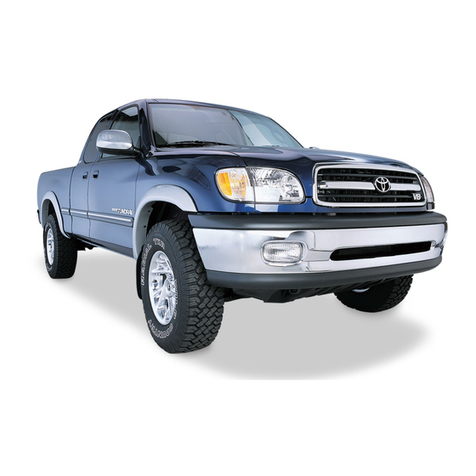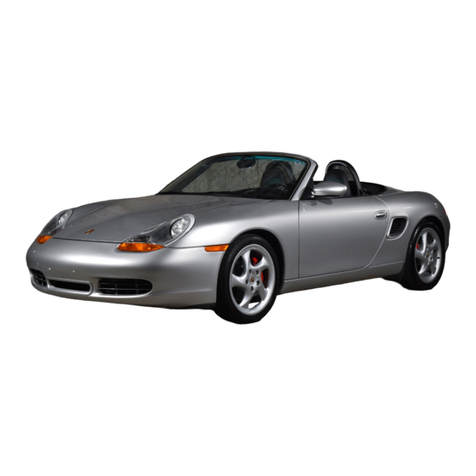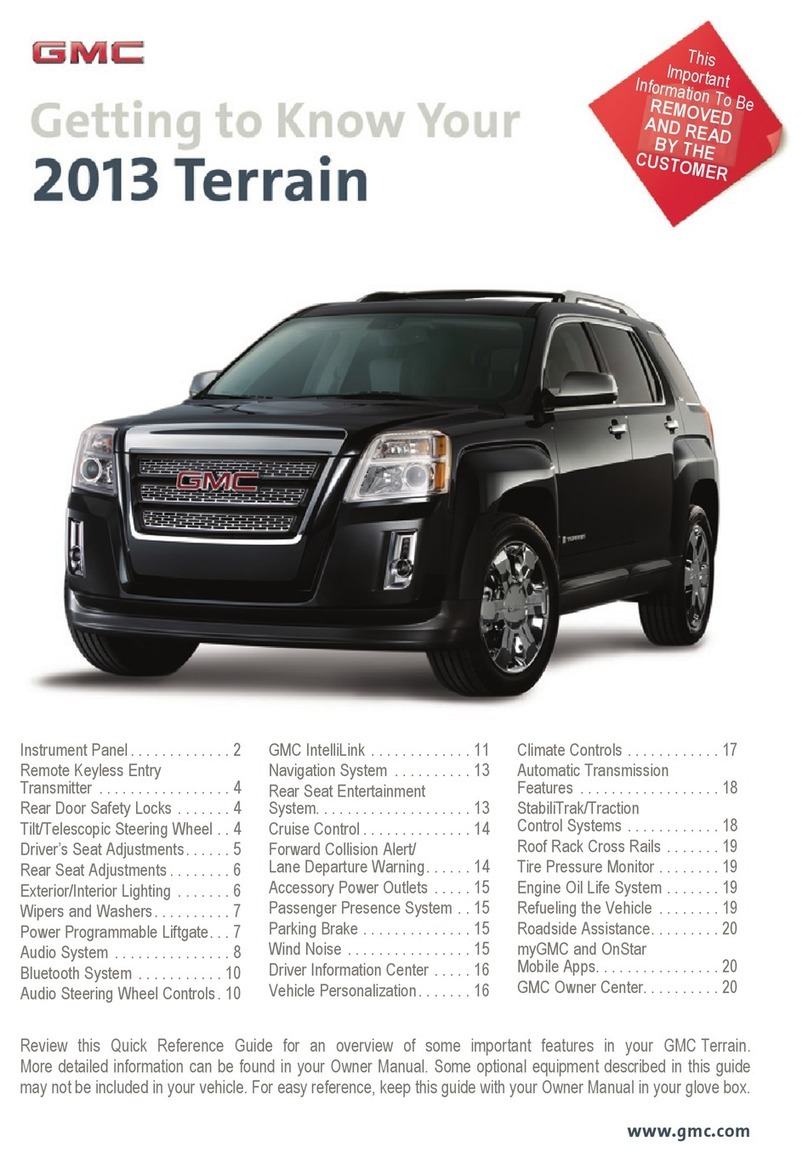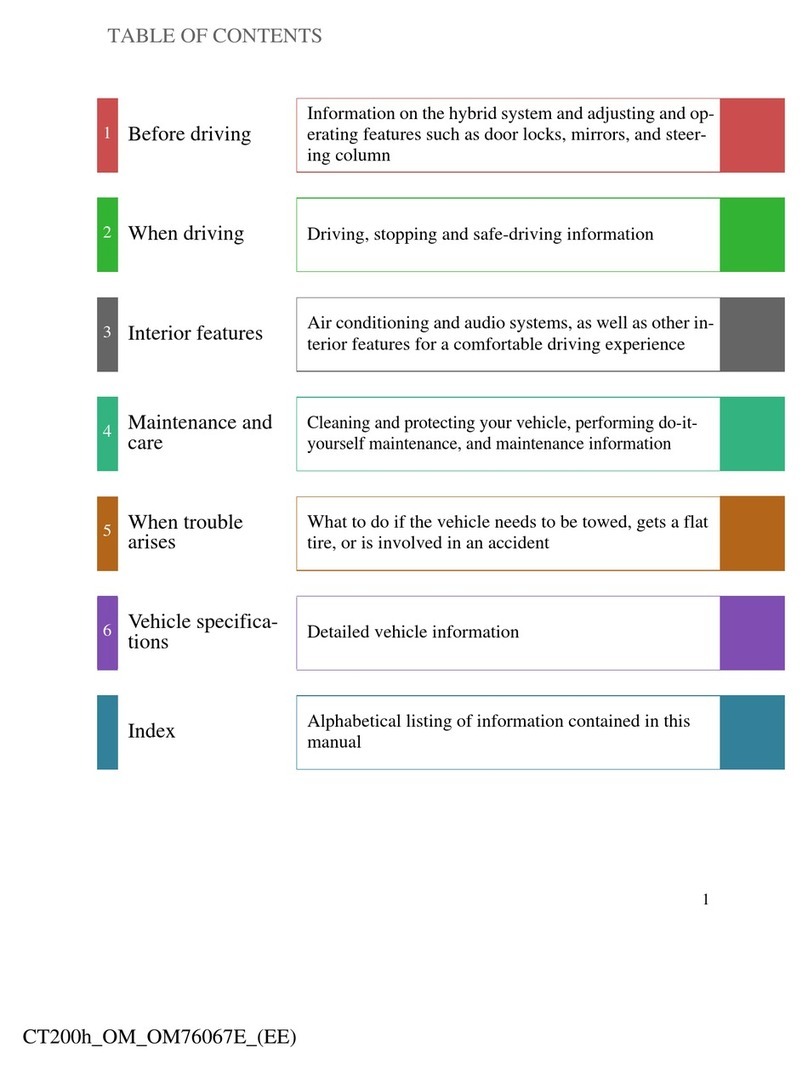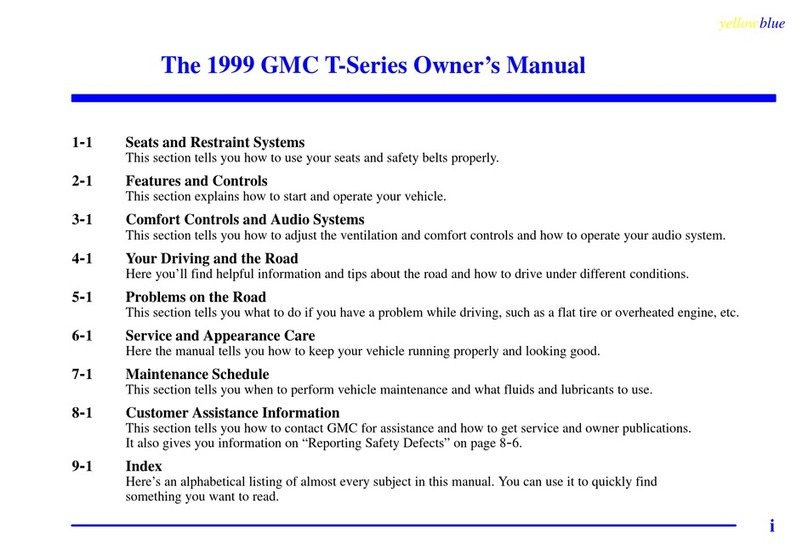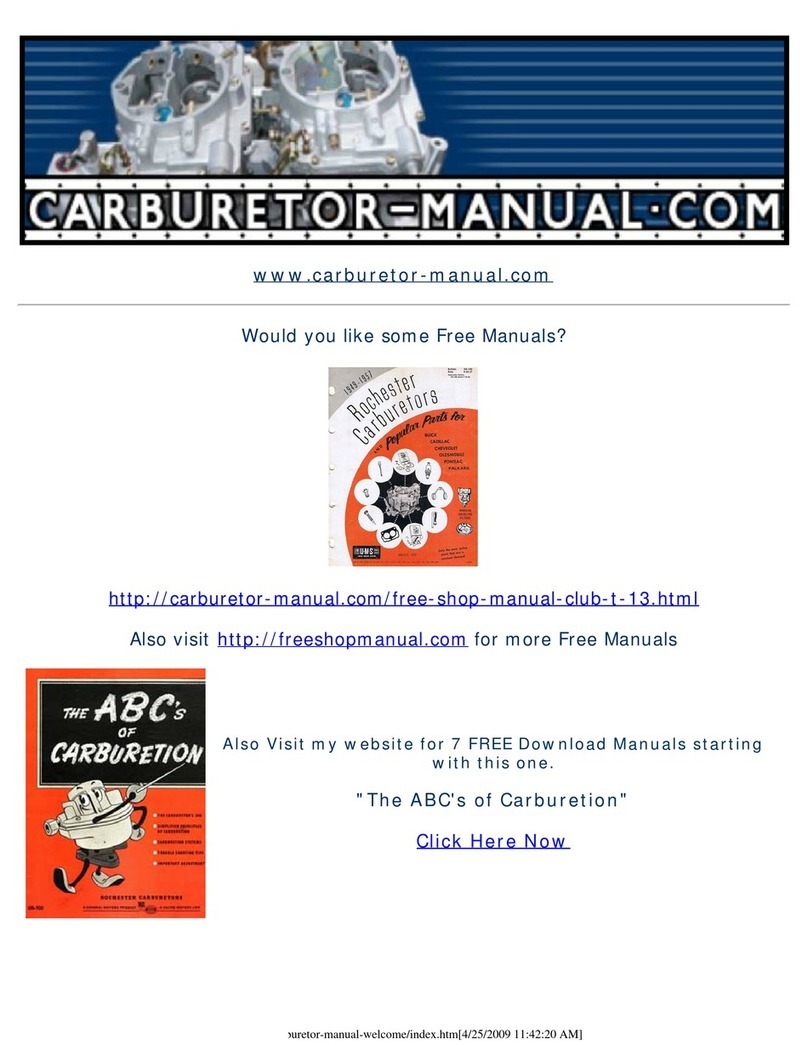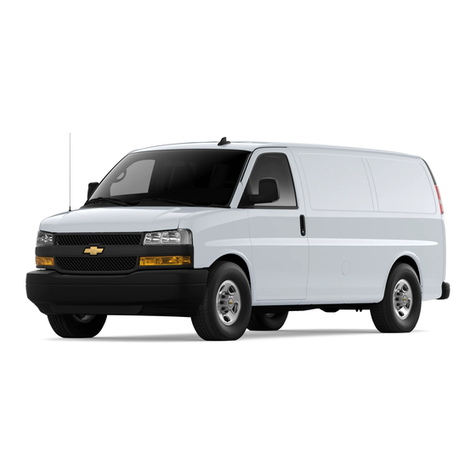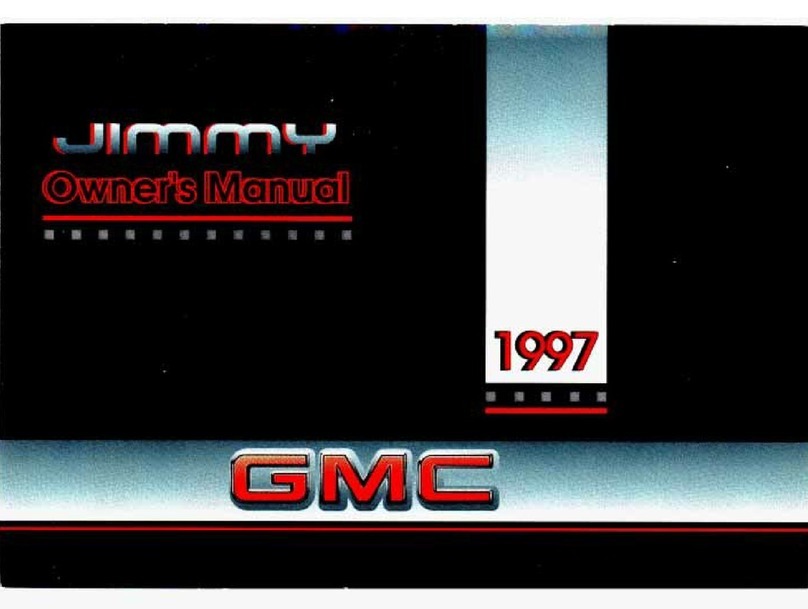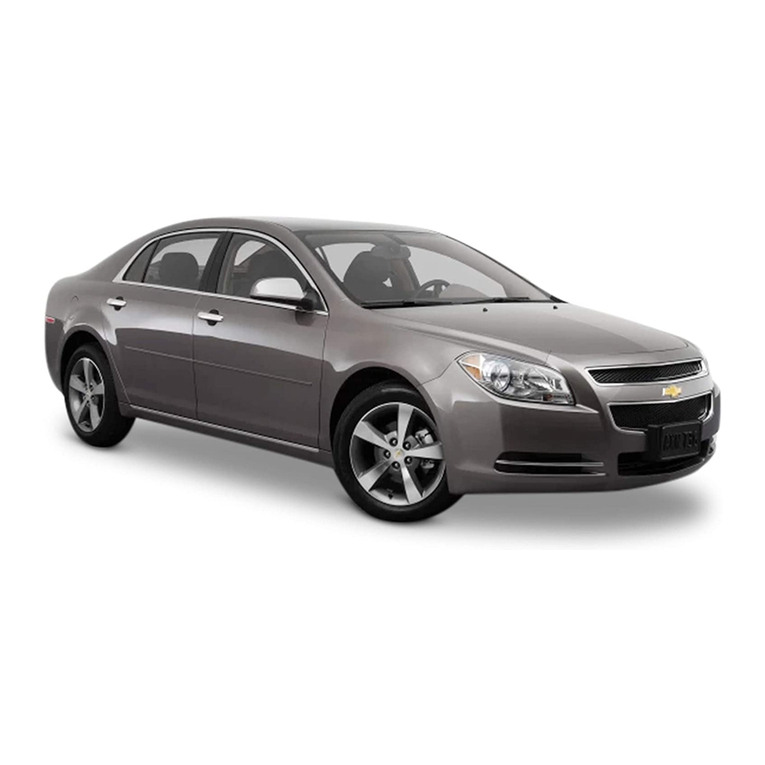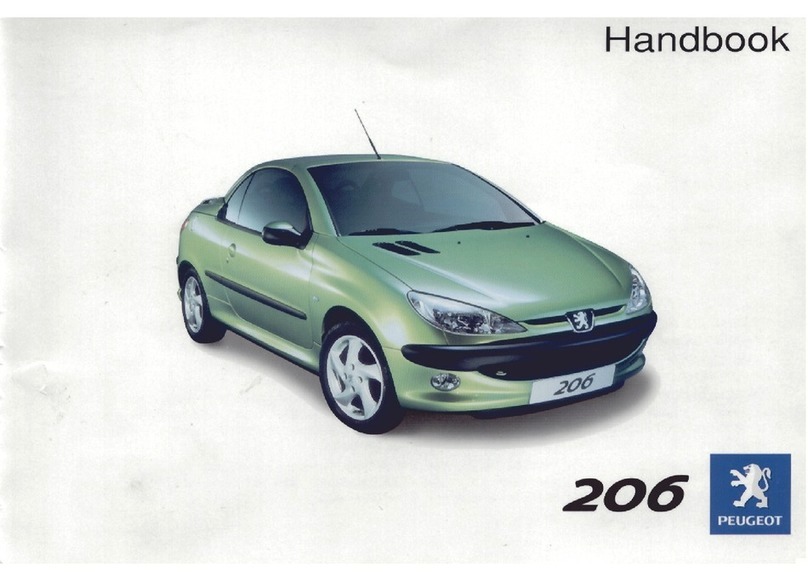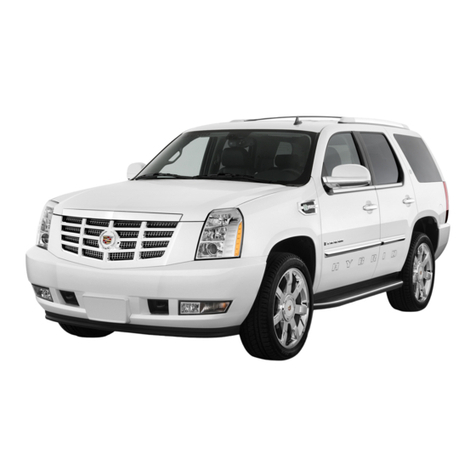
Liability for defects and ŠKODA warranty for new cars
Materials defect liability
Your ŠKODA Partner, as a vendor, is liable to you for material damage to your
new ŠKODA car, ŠKODA Genuine Parts or ŠKODA Genuine Accessories in ac-
cordance with statutory regulations and the purchase agreement.
ŠKODA warranty for new cars
As well as the materials defect liability, ŠKODA AUTO a.s. grants you the
ŠKODA warranty for new cars (hereinafter referred to as “ŠKODA warranty),”
according to the conditions described below.
As part of the ŠKODA warranty, ŠKODA AUTO will ensure the following serv-
ices.
▶Free repair of faulty components or vehicle defects that occur within two
years from the start of the ŠKODA warranty.
▶Free repair of paintwork defects on your vehicle that occur within three
years from the start of the ŠKODA warranty.
▶Free repair of rust perforation to the bodywork of your vehicle that occurs
within twelve years from the start of the warranty. Only rust perforation of
body panels from the inside to the outside is included in the definition of rust
perforation on bodywork and covered by the ŠKODA warranty.
The start of warranty is the date on which the first buyer purchases the new
cars from the ŠKODA Partner1). This date must be noted accordingly by the
ŠKODA Partner in the Owner´s Manual for your vehicle » Documentation of
vehicle handover.
Vehicle repairs may be carried out either by replacing the faulty part or by re-
pairing it. Replaced parts become the property of the ŠKODA Service Partner.
There shall be no further claims arising from the ŠKODA warranty. In particu-
lar, there shall be no claims for replacement, cancellation, provision of a cour-
tesy vehicle for the duration of repairs or compensation for damages.
If your ŠKODA vehicle was purchased from a ŠKODA Partner in a country in
the European Economic Area (i.e. the countries of the European Union, Nor-
way, Iceland and Liechtenstein) or in Switzerland, claims arising from the
ŠKODA warranty must also be made through a ŠKODA Service Partner in one
of these countries.
If your ŠKODA vehicle was purchased from a ŠKODA Partner outside the Eu-
ropean Economic Area and Switzerland, claims arising from the ŠKODA war-
ranty must also be made through a ŠKODA Service Partner outside the Euro-
pean Economic Area and Switzerland.
One of the conditions for service from the ŠKODA warranty is that all service
work has been carried out in a timely and adequate manner and in accordance
with ŠKODA AUTO provisions. It must be proven that service work has been
carried out properly and in accordance with the ŠKODA AUTO provisions
when raising a claim from the ŠKODA warranty. In the event of a missed serv-
ice or failure to carry out a service according to the ŠKODA AUTO provisions,
you may still be entitled to warranty claims as long as you can prove that the
missed service or the failure to carry out a service according to the ŠKODA
AUTO provisions was not the cause of the defect.
Natural wear and tear to your vehicle is not covered by the ŠKODA warranty.
The ŠKODA warranty also does not cover faults to bodywork, installations or
conversions provided by third-parties, or vehicle faults caused as a result. The
same applies to accessories that are not factory installed and/or delivered.
In addition, this warranty does not apply if the defect was caused by one of the
following:
▶Unauthorized use, improper handling (e.g. use in racing competitions or over-
loading), improper care and maintenance or unapproved modification to your
vehicle.
▶Non-compliance with provisions in the Owner's Manual or other factory-sup-
plied instructions.
▶External causes or influences (e.g. accidents, hail, flooding etc.).
1) Due to the requirements of generally binding country-specific regulations,
the date of first registration can be specified instead of the date the vehicle
handover.
5
Liability for defects and ŠKODA warranty for new cars
